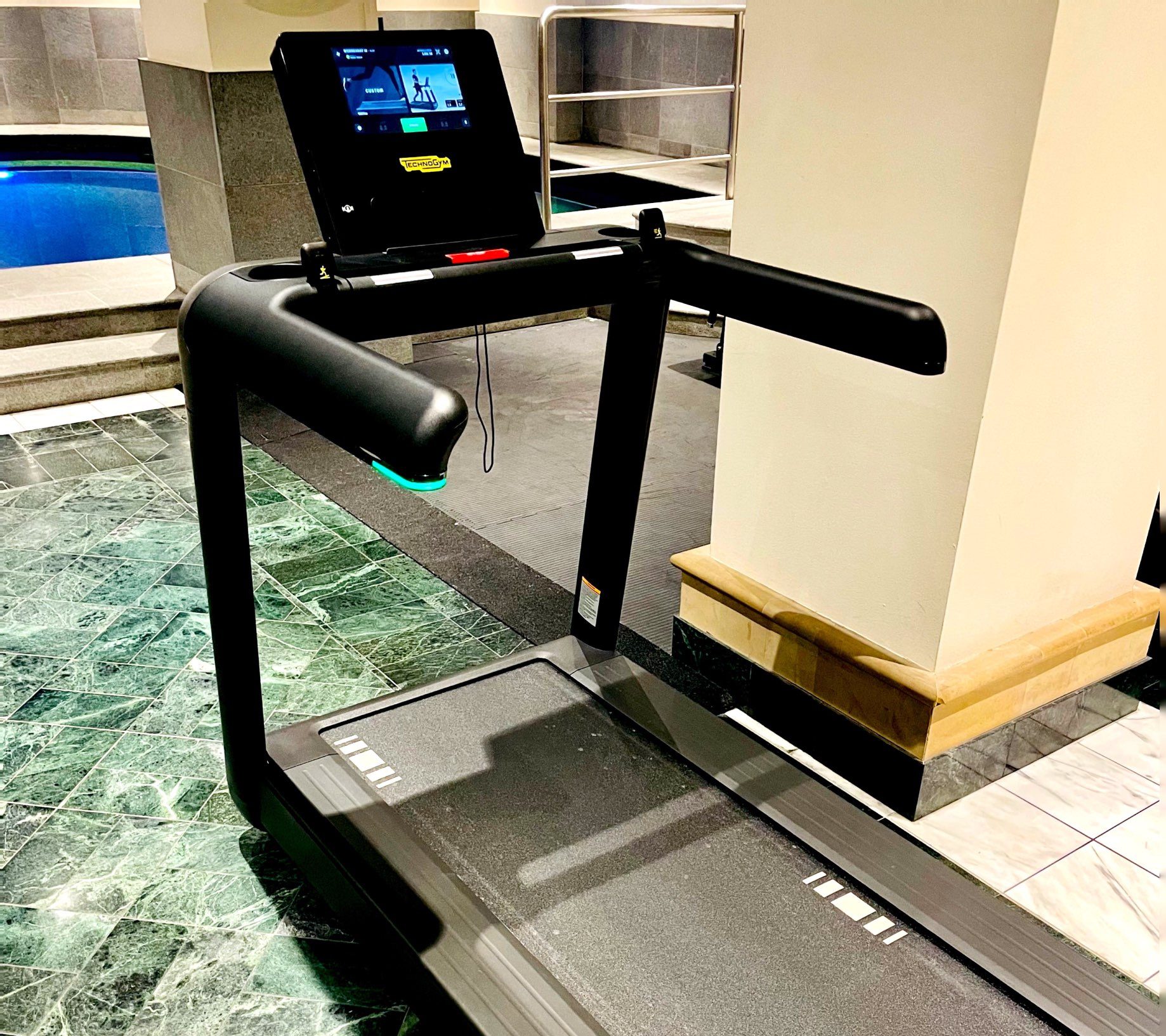How to Tighten Belt on Treadmill [A Simple Guide for Smooth Running]

Are you tired of your treadmill belt slipping or feeling loose during your workouts?
Don’t worry, we’ve got you covered!
In this article, we’ll show you the step-by-step process of how to tighten the belt on your treadmill, ensuring a smooth and safe workout experience.
Why is it important to tighten the belt on a treadmill?
Regularly tightening the belt on a treadmill is crucial for maintaining smooth and safe running conditions. A loose belt can lead to a variety of problems, including uneven running surface, slipping, and unnecessary strain on the motor and other treadmill components. By keeping the belt properly tightened, you can ensure a comfortable and efficient workout experience.
Signs that the Treadmill Belt Needs Tightening
- If the treadmill belt is not centered, or slips or slides while walking or running
- Uneven belt movement
- The belt feels loose or saggy
- Strange noises coming from the belt, such as squeaking or grinding
- Visible fraying or wear on the edges or surface of the belt
- Inconsistent speed or resistance during use
These signs indicate that the treadmill belt may need tightening to ensure smooth and safe running. If you notice any of these signs, it’s important to follow the proper steps to tighten the belt and maintain the treadmill’s performance.
In the next section, we will discuss the steps to tighten the belt on a treadmill, as well as the tools needed for the process.
Steps to Tighten the Belt on a Treadmill
- Unplug the treadmill: Before starting any maintenance or adjustment, make sure the treadmill is unplugged from the power source for safety.
- Locate the belt adjustment screws: Most treadmills have two belt adjustment screws at the rear end near the back roller. These screws are typically located on both sides of the treadmill frame.
- Identify the tension bolts: Look for the tension bolts located at the front end of the treadmill near the front roller. These bolts are usually found on both sides of the treadmill frame.
- Loosen the belt adjustment screws: Use an Allen wrench or a screwdriver to turn the belt adjustment screws counterclockwise. This will loosen the tension on the belt.
- Adjust the tension bolts: Use the same tool to turn the tension bolts clockwise. This will increase the tension on the belt. Start by tightening the bolts a quarter turn at a time.
- Check the belt tension: After tightening the tension bolts, manually test the belt tension by pressing down on the middle of the belt with your thumb. It should feel firm and not too loose or too tight. Adjust the tension further if needed.
- Retighten the belt adjustment screws: Once the desired belt tension is achieved, use the Allen wrench or screwdriver to turn the belt adjustment screws clockwise. This will secure the tension in place.
- Plug in the treadmill and test: After tightening the belt and securing the tension, plug in the treadmill and turn it on. Walk on the treadmill at a slow speed to check if the belt is running smoothly. If there are any issues, repeat the previous steps to make further adjustments.
Tools needed to tighten the belt on a treadmill
- Allen wrench or hex key: You may need to tighten your treadmill belt.
- Screwdriver: A screwdriver may be needed to access and adjust certain components of the treadmill belt tension system.
- Treadmill lubricant: In some cases, lubricating the treadmill belt can help with tightening and smooth running. Consult the treadmill’s user manual for specific lubrication requirements.
- Owner’s manual: The owner’s manual of the treadmill usually provides instructions and guidelines for tightening the belt. It is important to refer to the manual for your specific treadmill model to ensure proper adjustment.
Common Mistakes to Avoid When Tightening the Belt
When it comes to tightening the belt on a treadmill, it is important to avoid certain common mistakes that can affect the effectiveness of the tightening process. These mistakes can lead to an uneven running surface, excessive friction, or damage to the treadmill components. Here are some common mistakes to avoid when tightening the belt on a treadmill:
- Overtightening: While tightening the belt is necessary, it is important not to overtighten it. Overly tight belts can cause excessive friction and strain the motor, leading to premature wear and tear.
- Not aligning the belt: Another common mistake is failing to align the belt properly during the tightening process. Misalignment can result in an uneven running surface, causing discomfort and potentially leading to injuries.
- Using improper tools: It is essential to use the correct tools when tightening the belt. Using improper tools or techniques can damage the treadmill or lead to ineffective tightening.
- Not following the manufacturer’s instructions: Each treadmill model may have specific instructions for belt tightening. Not following these instructions can result in improper tension and affect the overall performance of the treadmill.
- Ignoring regular maintenance: Failing to perform regular maintenance can contribute to belt loosening over time. It is important to clean and lubricate the belt regularly to maintain optimal performance.
How often should the treadmill belt be tightened?
Regular maintenance of your treadmill is essential to ensure smooth and safe running. One important aspect of treadmill maintenance is tightening the belt. The frequency at which you should tighten the treadmill belt depends on the usage and the type of treadmill you own.
As a general guideline, it is recommended to check and tighten the treadmill belt every 3 to 6 months or after every 150 to 200 hours of use. However, it’s important to note that this can vary based on the specific manufacturer’s recommendations or if you notice any signs of the belt becoming loose or slipping during your workouts.
Tips for maintaining a properly tightened treadmill belt
- Regular inspection: Check the treadmill belt regularly to ensure it is properly tensioned and aligned.
- Proper lubrication: Lubricate the treadmill belt according to the manufacturer’s instructions to reduce friction and prolong belt life.
- Adjustment screws: Familiarize yourself with the adjustment screws on your treadmill and use them to tighten or loosen the belt as needed.
- Evaluate the tension: Test the tension of the belt by walking or running on the treadmill. If it feels too loose or too tight, make the necessary adjustments.
- Keep the treadmill clean: Regularly clean the treadmill belt and deck to prevent debris buildup, which can affect belt tension.
- Proper belt alignment: Ensure the treadmill belt is centered and aligned properly to prevent excessive wear and unnecessary stress on the motor.
- Follow maintenance guidelines: Refer to the treadmill’s user manual for specific maintenance recommendations and follow them accordingly.
When Should You Seek Professional Help to Tighten the Belt?
It is important to know when to seek professional help to tighten the belt on your treadmill. While it is possible to tighten the belt yourself with the right tools and knowledge, there are certain situations where professional assistance may be necessary. If you experience any of the following issues, it is recommended to consult a professional:
- Persistent belt slipping: If you have tightened the belt multiple times but it continues to slip during use, it could indicate a more complex underlying problem that requires professional attention.
- Uneven belt tension: If you notice that the belt is tighter or looser in certain areas, it could be a sign of misalignment or damage that needs to be addressed by a professional.
- Noise or grinding sounds: Unusual noises or grinding sounds when using the treadmill may indicate a problem with the belt or the motor, which should be inspected and repaired by a professional.
- Belt fraying or damage: If you notice significant fraying, tears, or other damage to the belt, it is best to have it replaced by a professional to ensure optimal safety and performance.
- Lack of confidence or experience: If you are unsure about your ability to properly tighten the belt or are unfamiliar with the process, seeking professional help can provide peace of mind and ensure the job is done correctly.
Conclusion
Regularly tightening the belt on a treadmill is essential for maintaining smooth and safe running conditions. A loose belt can cause slipping, uneven running surface, and strain on the treadmill components. By following the proper steps and using the right tools, you can ensure a comfortable and efficient workout experience.

![How Long Does It Take To Walk 5 Miles? [A Comprehensive Guide]](https://149924277.v2.pressablecdn.com/wp-content/uploads/2023/07/5-Mile-Walk-768x768.jpg)

![How Do I Lose 10 Pounds? [The Ultimate Guide to Shedding Weight]](https://149924277.v2.pressablecdn.com/wp-content/uploads/2023/07/Losing-10-pounds-768x768.jpg)

![Can I Do Cardio After a Massage? The Ultimate Guide [Safety Tips & Benefits]](https://149924277.v2.pressablecdn.com/wp-content/uploads/2023/07/Cardio-After-A-Massage-768x768.jpg)
![How to Run Longer Without Stopping? [Expert Tips & Techniques]](https://149924277.v2.pressablecdn.com/wp-content/uploads/2023/07/Run-Longer-768x768.jpg)